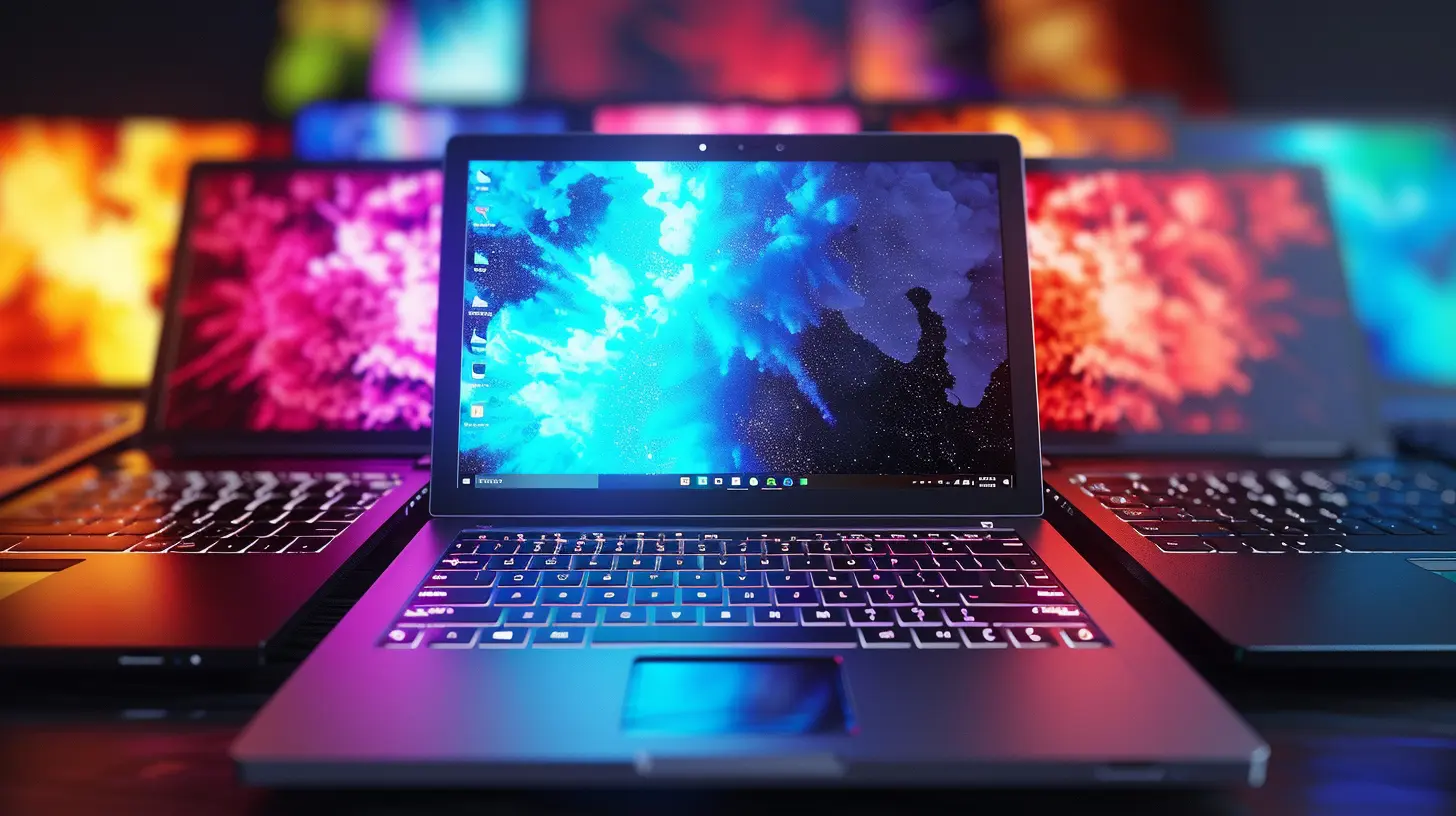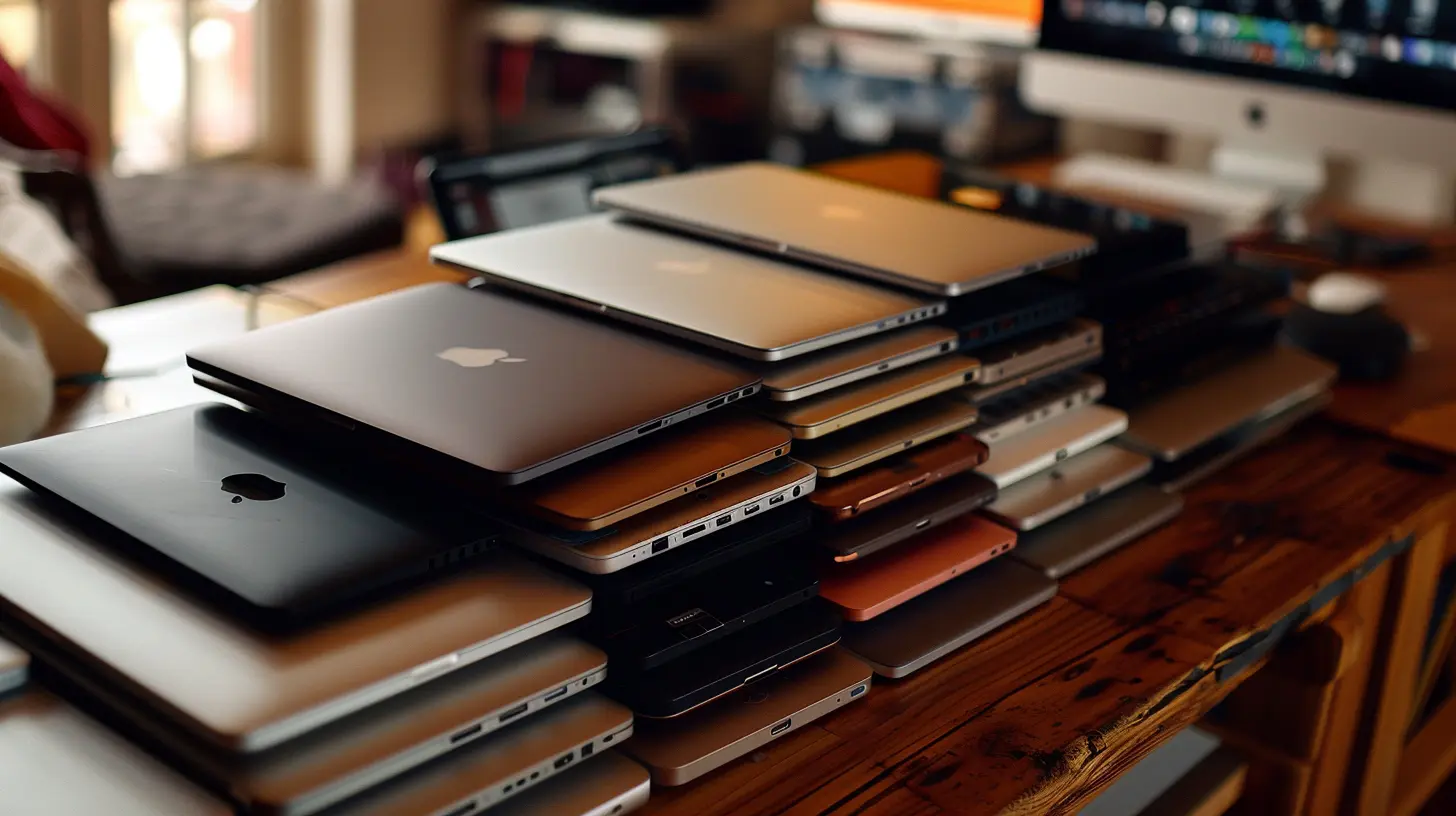How to Choose the Right Storage Size for Your Ultrabook
23 September 2025
Let’s face it: picking an ultrabook isn’t just about looks or performance. One of the most crucial (yet often overlooked) decisions is storage size. It's like moving into a new apartment but not knowing how many closets you’ll have — things can get messy real quick. So, if you're about to buy a shiny new ultrabook, let’s break down what storage size fits your needs without turning your device into a slow, overstuffed backpack.

Why Storage Size Matters More Than You Think
You don’t want to be the person who constantly deletes files just to make room for one more download, right? Storage isn’t just about saving documents and photos. It directly affects your ultrabook’s speed, flexibility, and even longevity.A smaller drive might make your ultrabook cheaper upfront, but if it runs out of space quickly, brace yourself for constant headaches. On the flip side, splurging on massive storage might be an overkill if you mostly browse, stream, and type.
Your goal? Hit the sweet spot — enough space to breathe, not so much that you’re paying for real estate you’ll never use.
Types of Storage: Not All Are Created Equal
Before we dive into sizing, let’s clear up the confusion about storage types. No, all SSDs aren’t born equal, and not every “256GB” behaves the same.SSD vs HDD: What’s the Difference?
Most ultrabooks come with SSDs (Solid State Drives) these days, and for good reason.- SSD (Solid State Drive): Way faster, more durable, energy-efficient, and silent. It’s like teleporting between folders compared to the snail pace of an HDD.
- HDD (Hard Disk Drive): Typically larger in size but slower and more fragile. Rare in modern ultrabooks but still used in budget or hybrid laptops.
Always choose SSD if you care about speed and smooth performance — especially with boot times and app launches.
NVMe vs SATA SSD
There’s SSD, and then there’s SSD royalty.- SATA SSDs are older and slower.
- NVMe SSDs (usually PCIe-based) are lightning-fast and the real MVP for ultrabooks. Think of them as the Autobahn of SSDs.
If your ultrabook offers NVMe options, it’s a no-brainer.
Common Ultrabook Storage Sizes
Here’s what you’ll usually find when shopping:- 128GB – Found on budget ultrabooks.
- 256GB – Most common for mid-range devices.
- 512GB – Sweet spot for most users.
- 1TB and up – Premium territory for power users or professionals.
Let’s unpack what each of these sizes actually offers in real-life usage.
Is 128GB Enough?
Only if you live in the cloud and pack light — very light.Ideal For:
- Students on a tight budget- Casual users (emails, browsing, streaming)
- People who rely heavily on cloud storage (Google Drive, OneDrive, Dropbox)
But, here's the catch: after Windows and a few apps, your “128GB” probably leaves you around 90GB usable. Toss in some media files and poof — you're outta space. Unless you like the thrill of constantly juggling files, go bigger.
Is 256GB the Safe Bet?
Ah, the classic middle-ground. Not too little, not too much.Ideal For:
- Everyday users- Light media consumers
- Writers, bloggers, casual gamers
With around 200GB of usable space, you can store a healthy combo of documents, apps, and a few movies. But don’t go wild with large games or 4K video files — you’ll fill it up fast.
This is a safe pick for most people. If you're not dealing with massive media files or lots of software, 256GB can last you years.
What About 512GB?
Now we’re talkin’. With this much space, your ultrabook can breathe.Ideal For:
- Professionals- Creatives (photo/video editing)
- Light gamers or hobbyists
You can install large software suites like Adobe Creative Cloud, keep a solid library of movies and music, store thousands of photos, and still have space for work stuff. If you can afford it, 512GB offers a nice buffer between 'enough' and 'too much'.
Do You Really Need 1TB or More?
Unless you're editing 4K videos every day or have a massive game library, probably not. But if you fit any of these categories, it might be worth the splurge.Ideal For:
- Content creators and video editors- Hardcore gamers
- Professionals with large project files
One terabyte gives you the freedom to never worry (much) about storage. But it also comes with a hefty price tag. Make sure you genuinely need it — otherwise, you’re just paying for space that’ll stay empty.
How Much Storage Does the Operating System Use?
Here’s a sneaky truth — you never get the full amount of storage advertised.- Windows 11 eats up around 20–30GB right out of the box.
- Pre-installed apps, drivers, and recovery partitions take another chunk.
- Realistic space left after boot? Subtract about 20% from the advertised amount.
So when you buy a “256GB” drive, you’re likely starting with 200GB or less. Keep that in mind when budgeting your digital space.
Cloud Storage: The Lifeline for Smaller Drives
If you’re tight on storage but don’t want to jump to a higher tier, cloud storage can be your savior.Platforms like:
- Google Drive
- Microsoft OneDrive
- Dropbox
- iCloud (for Mac users)
…help you extend your space virtually. With high-speed internet, this is a solid solution. Just be cautious of file availability offline and data privacy concerns.
Pro Tip: If you’ll rely on cloud storage, make sure your ultrabook has solid internet connectivity and maybe even LTE/5G support if you’re always on the go.
External Drives: The Backup Plan
Another way to dodge ultrabook storage limitations is to grab an external SSD or HDD.- External SSDs: Small, lightning-fast, pricier
- External HDDs: Larger, slower, cheaper, better for storage hogs
They’re perfect for storing non-essential files, backups, photo galleries, or your 100GB game library. Just don’t forget to carry them with you!
Upgradable Storage: Amen or Amen’t?
Here’s a sad reality: most ultrabooks have soldered SSDs — meaning you can’t upgrade them later.Before you buy, check if the model allows SSD upgrades. If yes, it’s okay to go slightly smaller now and plan an upgrade down the road. If not, better safe than sorry — choose a bigger size from the get-go.
Real-Life Scenarios: What Size Do You Need?
Let’s break it down by user personas:🧑🎓 The Student
- Usage: Docs, web, streaming, light editing- Storage Needed: 256GB is the sweet spot
🧑💼 The Professional
- Usage: Office apps, light creative work, emails, multitasking- Storage Needed: 512GB gives you breathing room
🎮 The Gamer
- Usage: AAA titles, game downloads, updates, media- Storage Needed: Minimum 512GB — preferably 1TB
📸 The Content Creator
- Usage: Photo/video editing, Adobe Suite, RAW files- Storage Needed: 1TB or higher allows smooth workflows
🌐 The Cloud-Comfy Minimalist
- Usage: Browser-based tools, cloud apps, little local storage- Storage Needed: 128GB is manageable (but 256GB safer)
Future-Proofing: Think Ahead (Just A Little)
Storage isn’t just about today. Ask yourself this: Are you the kind of person who installs new apps every month? Do you store a million photos or videos? Or maybe your work is growing, and along with it, your file sizes?Give yourself a buffer. Even if you think 256GB is enough now, going 512GB might save you from upgrading early or running into frustration.
Tips to Maximize Storage Space
Already purchased a lower-storage ultrabook? Here are a few tricks:- Regularly clean your Downloads folder (it’s a black hole)
- Uninstall bloatware and apps you don’t use
- Store media files on an external drive
- Use cloud storage for backups and less-used files
- Turn off hibernate (it can eat several GBs)
Final Thoughts
Choosing the right storage size for your ultrabook isn’t rocket science, but it deserves more thought than most people give it. Don't just go by what's popular — think about your daily needs, how you work or play, and whether you want peace of mind or constant file shuffling.Remember, getting the right storage isn't just about space — it's about freedom. The freedom to work, create, and enjoy without the nagging worry: "Am I running out of room?"
So make your choice wisely. Your ultrabook (and your sanity) will thank you.
all images in this post were generated using AI tools
Category:
UltrabooksAuthor:

John Peterson
Discussion
rate this article
1 comments
Everett Lawson
Choosing the right storage size for your ultrabook hinges on usage patterns. For casual tasks, 256GB might suffice, but power users or gamers should consider 512GB or more. Always factor in future needs and the benefits of SSD speed versus HDD capacity. Smart planning is key!
September 23, 2025 at 2:21 AM

John Peterson
Thank you for your insightful comment! You're absolutely right—understanding usage patterns and planning for future needs are crucial when selecting the right storage size for an ultrabook.


